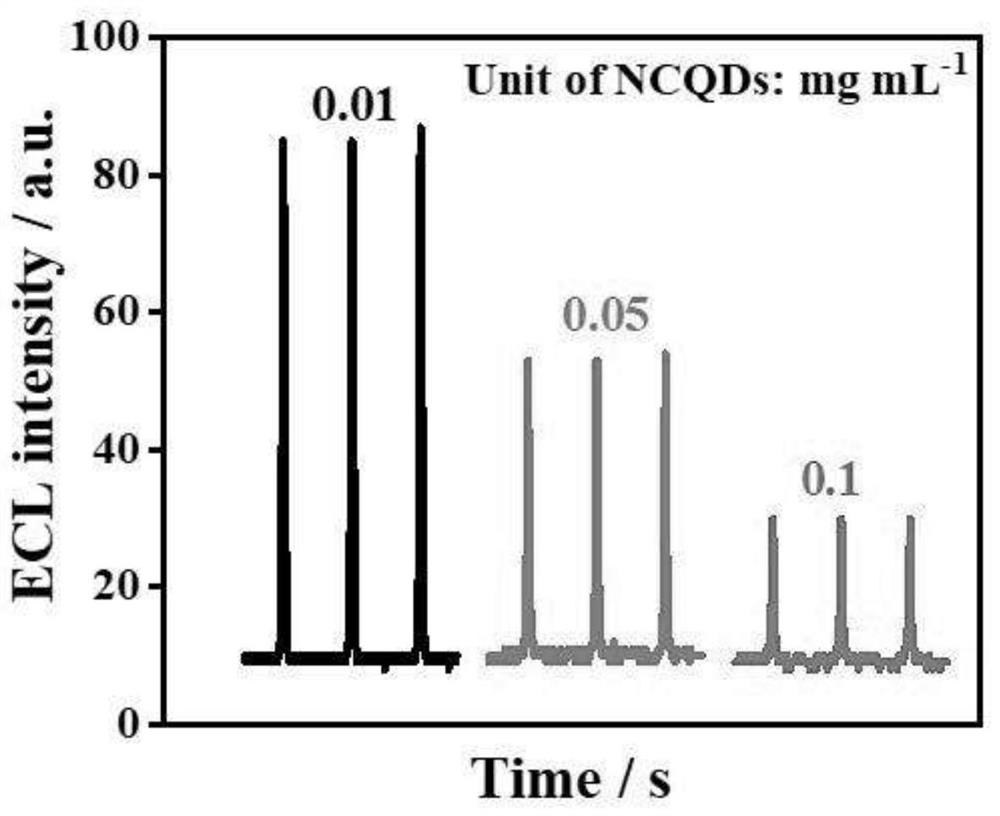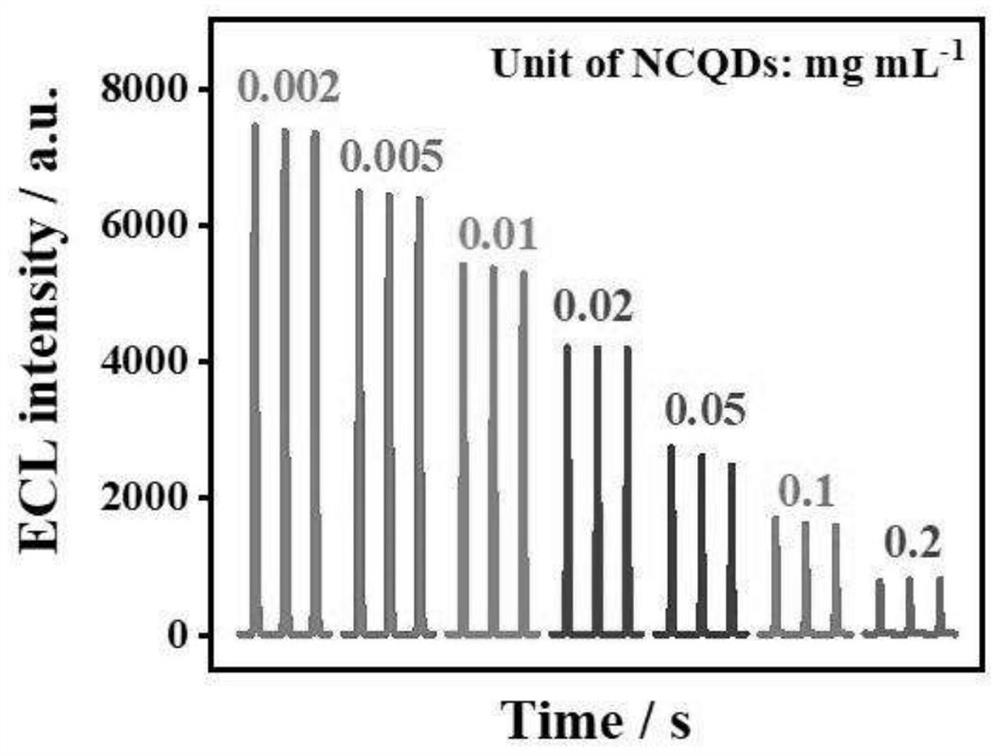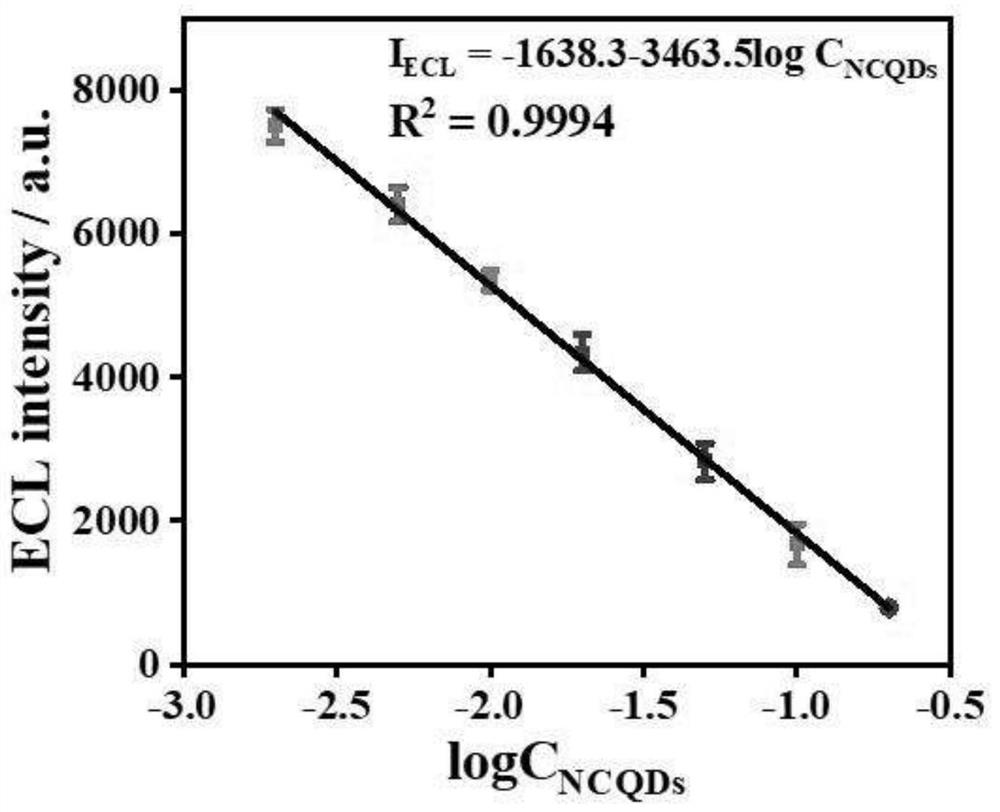An electrochemiluminescent method for detecting nitrogen-doped carbon quantum dots
A carbon quantum dot, electrochemical technology, applied in the field of electrochemical detection, can solve the problem of no relevant reports, and achieve the effects of high sensitivity, low cost, and short detection time
- Summary
- Abstract
- Description
- Claims
- Application Information
AI Technical Summary
Problems solved by technology
Method used
Image
Examples
Embodiment 1
[0026] In an electrochemiluminescence cell containing 1 mL of 0.2 M PBS (pH 7.5) solution, 32 μL of 10 mM solution of carboxylated ruthenium terpyridine was added, and 968 μL of deionized water was added, wherein the concentration of carboxylated ruthenium terpyridine was 0.16 mM. The mixed solution was scanned by the electrochemiluminescence signal through the three-electrode system under the parameters of the voltage of 0.2V-1.25V, the scan rate of 100mV / s, and the high voltage of the photomultiplier tube of 700V, to obtain the carboxylated terpyridine ruthenium solution B the luminous signal;
[0027] Different amounts of nitrogen-doped carbon quantum dots were sequentially added to the above mixed solution, fully dissolved, and mixed to obtain mixed solutions with different NCQDs concentrations; wherein, the NCQDs concentrations were 0.01 mg / mL, 0.05 mg / mL and 0.1 mg / mL. mL, and the mixed solution of different concentrations of NCQDs was scanned by the three-electrode syst...
Embodiment 2
[0030] In an electrochemiluminescence cell containing 1 mL of 0.2M PBS (pH 7.5) solution, add 32 μL of 10 mM carboxylated ruthenium terpyridine solution and 200 μL of 100 μM tripropylamine (TPA) solution, add 768 μL of deionized water, and mix to obtain Mixed solution A, wherein the concentration of carboxylated ruthenium terpyridine in mixed solution A is 0.16 mM, and the concentration of tripropylamine is 10 μM. The mixed solution A was scanned for electrochemiluminescence signals through a three-electrode system under the parameters of a voltage of 0.2V to 1.25V, a scan rate of 100mV / s, and a photomultiplier tube high voltage of 700V, to obtain information about carboxylated ruthenium terpyridine and The luminescence signal of tripropylamine mixed solution D;
[0031] Different amounts of nitrogen-doped carbon quantum dots were sequentially added to mixed solution A, fully dissolved and mixed to obtain mixed solution B with different NCQDs concentrations; in mixed solution ...
PUM
 Login to View More
Login to View More Abstract
Description
Claims
Application Information
 Login to View More
Login to View More - R&D
- Intellectual Property
- Life Sciences
- Materials
- Tech Scout
- Unparalleled Data Quality
- Higher Quality Content
- 60% Fewer Hallucinations
Browse by: Latest US Patents, China's latest patents, Technical Efficacy Thesaurus, Application Domain, Technology Topic, Popular Technical Reports.
© 2025 PatSnap. All rights reserved.Legal|Privacy policy|Modern Slavery Act Transparency Statement|Sitemap|About US| Contact US: help@patsnap.com



